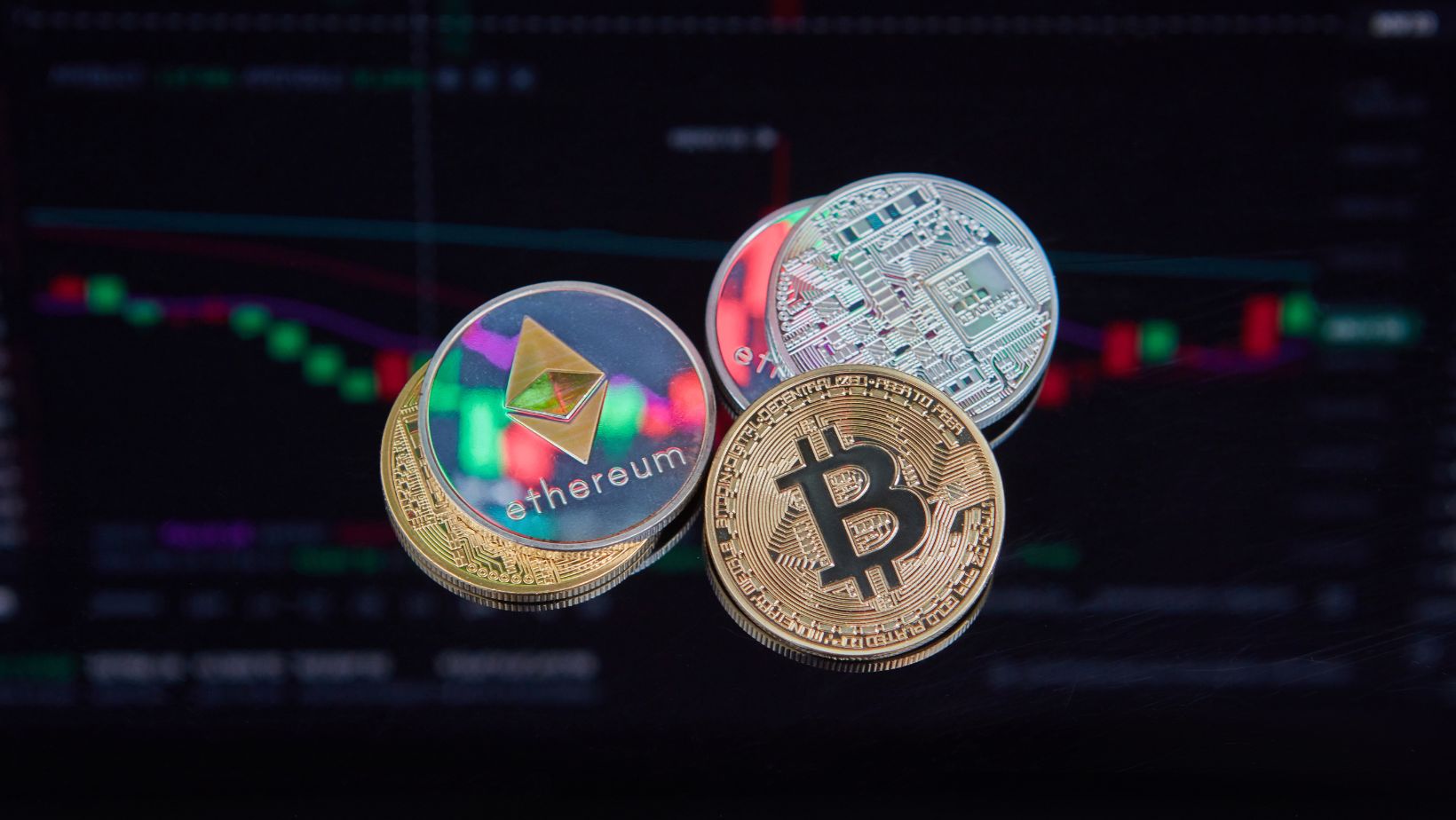
The cryptocurrency space has expanded far beyond its original concept of digital currency. Alongside Bitcoin and Ethereum, which were designed as decentralized digital currencies, we’ve witnessed the rise of NFTs (Non-Fungible Tokens), a completely different category of digital assets. While both cryptocurrencies and NFTs rely on blockchain technology, they serve very different purposes and present distinct investment opportunities. As the space continues to evolve, even crypto loans are emerging (such as a BTC loan), where people can use their BTC as collateral—just one example of how crypto is becoming more integrated into traditional financial systems. But to truly understand the landscape, let’s first explore what makes cryptocurrencies and NFTs different from one another.
What Are Cryptocurrencies?
At their core, cryptocurrencies are digital or virtual currencies that use cryptographic techniques to secure transactions and control the creation of new units. Bitcoin (BTC), the first cryptocurrency, paved the way for thousands of other digital currencies, including Ethereum (ETH), Litecoin (LTC), and many more. The fundamental appeal of cryptocurrencies lies in their decentralized nature—no central authority, like a bank or government, controls them.
Cryptocurrencies primarily function as currencies, meant for everyday transactions or as store-of-value assets. Bitcoin, for example, has become recognized as a digital gold equivalent due to its scarcity (only 21 million BTC will ever be mined) and its potential as a hedge against inflation. In addition to their role as digital currencies, cryptocurrencies have become more versatile—offering options like crypto loans, where assets like Bitcoin can be used as collateral to borrow funds, making it even more integrated into the broader financial ecosystem.
What Are NFTs?
Unlike cryptocurrencies, which are interchangeable (fungible), NFTs (Non-Fungible Tokens) are unique digital assets that represent ownership of a specific item, artwork, or piece of content. NFTs are often used in sectors like art, gaming, and entertainment, where rarity and individuality are key. Each NFT is stored on a blockchain (typically Ethereum), where it is authenticated and made publicly traceable, ensuring its uniqueness and provenance.
What sets NFTs apart from cryptocurrencies is that they are non-fungible—meaning each token is one-of-a-kind and cannot be exchanged for another on a 1:1 basis like Bitcoin or Ether. An NFT could represent anything from digital art, music, virtual land in the metaverse, or even tweets. In essence, NFTs are about owning a digital asset with verifiable scarcity and value. This opens up entirely new markets for creators and investors alike, creating opportunities for unique investments that weren’t possible in the traditional financial world.
Key Differences Between Cryptocurrencies and NFTs
- Fungibility vs. Uniqueness: The most fundamental difference between cryptocurrencies and NFTs is fungibility. Cryptocurrencies like Bitcoin and Ethereum are fungible, meaning one Bitcoin is always equivalent to another. NFTs, on the other hand, are unique and cannot be exchanged on a like-for-like basis. Each NFT represents a specific, irreplaceable digital item or piece of content.
- Purpose: Cryptocurrencies are primarily intended as digital currencies for transactions, investment, or as a store of value. Bitcoin is seen as a digital gold equivalent, while Ethereum powers decentralized applications (dApps) and smart contracts. NFTs, however, are used to verify ownership and provenance of unique digital assets, often in the realms of art, collectibles, and gaming.
- Market Volatility: Both NFTs and cryptocurrencies can be volatile, but NFTs are generally more speculative. The price of an NFT is determined by factors like the fame of the creator, the rarity of the asset, and the demand for the specific piece, which can lead to significant price swings. Cryptocurrencies, while volatile, are generally more liquid and tend to have broader use cases that provide some stability in comparison.
- Liquidity: Cryptocurrencies are generally more liquid than NFTs. Bitcoin and Ethereum can be easily bought and sold on exchanges, with established markets for trading. NFTs, by contrast, are typically traded on niche marketplaces like OpenSea or Rarible, and their liquidity depends on the demand for specific digital assets. The market for NFTs can be far more illiquid, especially if you’re trying to sell something highly niche or speculative.
- Regulatory Landscape: Both NFTs and cryptocurrencies are facing increasing scrutiny from regulators around the world, but cryptocurrencies, especially Bitcoin, are beginning to be treated as more formal assets. NFTs, still relatively new, remain largely in a gray area in terms of regulation. This makes investing in NFTs somewhat riskier from a legal and tax perspective.
Which Is a Better Investment: Cryptocurrencies or NFTs?
Deciding between investing in cryptocurrencies or NFTs largely depends on your risk tolerance, investment goals, and understanding of the respective markets.
Cryptocurrencies as an Investment
Cryptocurrencies, particularly Bitcoin and Ethereum, have established themselves as viable long-term investment assets. Bitcoin loans have also made it easier for investors to leverage their Bitcoin holdings without selling, allowing them to potentially earn interest or access liquidity in a way that wasn’t possible before. If you’re looking for liquidity, ease of access, and an asset with potential for growth over time, cryptocurrencies might be the better choice.
Bitcoin, as the first and most recognized cryptocurrency, is often viewed as a store of value and is seen by many as “digital gold.” The market for Bitcoin is mature, and with the increasing acceptance of crypto in traditional finance, its future is looking more promising. Ethereum, with its smart contract capabilities and leading role in DeFi, is another solid long-term investment for those interested in blockchain technology beyond simple currency use.
NFTs as an Investment
On the other hand, NFTs have created new opportunities in the art, gaming, and entertainment industries, which can provide more speculative rewards but come with a much higher degree of risk. As unique digital assets, NFTs can offer ownership of rare or iconic pieces that hold significant cultural value—sometimes outpacing traditional art investments in terms of returns. However, their market is far more volatile, and many investors are still figuring out how to accurately assess the value of digital assets.

For example, digital art created by renowned artists or a rare in-game item could fetch significant amounts in the NFT market. However, the overall liquidity of NFTs is much lower than that of cryptocurrencies, and the market is still largely driven by trends and hype. If you’re willing to take on the risk, NFTs could offer high-reward opportunities, but they require deeper knowledge of specific niches (e.g., digital art, gaming, virtual real estate) to make informed decisions.
Conclusion: The Future of Digital Assets
Both cryptocurrencies and NFTs represent exciting frontiers in the world of digital assets, and each serves a unique purpose in the broader blockchain ecosystem. Cryptocurrencies, particularly Bitcoin, remain a safer bet for those looking for liquidity and a store of value, while NFTs offer a new realm of speculative investment opportunities centered around digital uniqueness and ownership.
For those interested in a more traditional asset-like investment, Bitcoin and other major cryptocurrencies might be the better choice, especially with the rise of crypto loans, including Bitcoin-backed loans, which add a layer of utility to your holdings. On the other hand, if you’re an investor with a higher risk tolerance and a keen interest in art, culture, or gaming, NFTs could provide rewarding opportunities—but with higher volatility and uncertainty.
As the cryptocurrency and NFT markets continue to evolve, it’s clear that both play distinct but complementary roles in shaping the future of digital assets. Your choice between the two will depend on your financial goals, risk appetite, and understanding of the underlying technologies driving this revolution.



